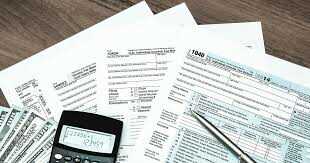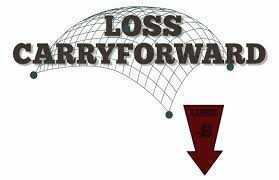Introduction
In the same way, they can do with loss carryforwards; businesses can reduce their current year's profits by using the previous year's net operating losses as a deduction. Because the corporation's tax liability has decreased, it will be eligible to receive a refund of any taxes it has already paid for the year in question due to the loss carryback provision. Following the company's loss from the carryover from the previous year, the business will be in the same position as if it had overpaid its taxes for that particular year. A business that suffers a loss due to its operations has the option of determining how the resulting NOL will be utilised.
Because the time value of money indicates that tax savings made in the present are more valuable than those made in the future, it is essential to remember that an NOL carryback is typically more advantageous than a carryforward. A carryforward may be the superior choice if a company is faced with exceptional circumstances, such as a sharp increase in the business tax rate. However, this is not the standard practice.
Historically, the amount of time that NOLs could be used to reduce or eliminate the impact of tax liability ranged anywhere from 0 to 5 years. Because tax carrybacks are such a helpful tool for tax planning, legislation about taxes has discussed them quite frequently. Taxpayers typically get an extension on the deadline for using their accumulated loss carrybacks when the economy slumps. Carryforwards are the only option available now that the tax code has removed the option to make a carryback. When considering a carryback, it is necessary to have a solid understanding of the current standing of any applicable legislation.

How Does the Loss Carryback Rule Work?
Carrying a loss forward into the next accounting period is conceptually equivalent to carrying a loss backwards into the previous period. The most significant difference between loss carryback and loss carryforward is that the former uses a business's net operating loss from the previous year. In contrast, the latter uses a business's net operating loss from the year after. A business can generally apply its loss carryback to the two years before the year in which the net operating loss was incurred, although there are some limited exceptions to this rule. The most recent year for which a loss can be deducted is the most recent year in which the loss took place.
Example of Loss Carryback
For example, if a company ran into a net operating loss in the fifth year of its business, it could apply its loss carryback to either the third or fourth year of its business. The remaining loss can be carried over to the fourth year if the company's tax liability is completely offset due to the loss carryback in the third year. If at the end of Year 4, there is still a net operating loss, then that loss will be carried forward to Years 6, 7, etc., and so on, until either the total loss is used up or it becomes zero.
The loss carryback provision allows for losses to be carried back for a maximum of two years, while the loss carryforward provision allows for losses to be carried forward for a maximum of twenty years. When faced with a net operating loss, every company has the option of responding in a manner that best suits them. It's possible that some people would have preferred to write off the loss in the years that have already passed, while others might have been more inclined to do so in the years that are still to come.
Carrying forward a loss can be helpful for a company that anticipates an increase in its tax liability in the not-too-distant future because it allows the company to postpone payment of the liability. The choice regarding when a loss should be deducted, either in the past or future, is final and cannot be changed after it has been made. As a result, the company absolutely must have complete faith in the strategy that it will implement.

Eligibility criteria
You do not qualify for this deduction if the only source of income you had in the year that the loss was incurred as salary or wages, NZ Superannuation, schedular payments, income-tested benefits, interest or dividends, taxable Mori authority distributions, or benefits under an employee share scheme, and if you received an automatically calculated income tax assessment. In addition, you are not eligible for compensation if the year the loss was sustained the only year you received income from a salary, wages, tips, or an employee benefit plan. Before there can be a loss, there must first have been a year in which the business was profitable.
Conclusion
The term "loss carryback" refers to how a taxable loss incurred in a given year can be neutralised by the taxable profit realised in one or more years immediately preceding that year. Once this is finished, you may be eligible to receive a refund of taxes that you have already paid. It is preferable to have a loss carried back rather than a loss carried forward because the former results in an immediate injection of cash while the latter results in a tax reduction that might not be realised for several years.









